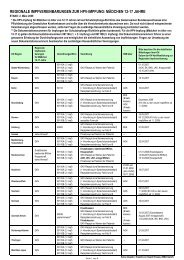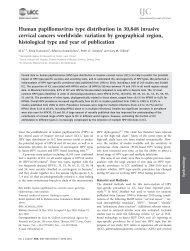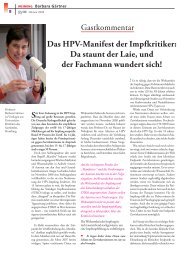Create successful ePaper yourself
Turn your PDF publications into a flip-book with our unique Google optimized e-Paper software.
CERVICAL CANCER SCREENING: A PUBLIC HEALTH ISSUEbetween <strong>HPV</strong> prevalence, disease incidence, and age. The peakprevalence of <strong>HPV</strong> infection occurs between the ages of 18 and 25years. Most infections are transient, and the average transition timefrom <strong>HPV</strong> infection to the development of cervical cancer is 13 years.Extrapolation from these data indicates that most cases of cervicalcancer occur after 25 years of age, in close agreement withobservations in most Western populations, where cervical cancer israre in younger women. In conclusion, therefore, screening youngwomen is not a cost-effective public health strategy.Implications of liquid-based cytology forscreening programmesThe introduction of liquid-based cytology (LBC) techniques mayimprove the performance of cervical cancer screening. 10 In a recentsystematic review, the estimated mean sensitivity of LBC was 16%higher than that of the Pap test, 11 although the evidence on LBCperformance is not yet convincing, because the trials undertaken todate all have weakness in study design. However, even if the 16%figure for improved sensitivity is accurate, the cost-efficiency ofscreening with LBC would only be better than that for Pap smearscreening if the additional costs per LBC preparation could be reducedto $2. 11 Importantly, this estimate is for a screening policy with a5-year interval and seven lifetime invitations. In many Westerncountries, the screening policy is more intensive, and the incrementalcontribution of LBC to the effectiveness of screening is lower; this isbecause false-negative cases from one screening round have a higherchance of being detected during subsequent screening rounds whilstthere is probably still sufficient time for the disease to be successfullytreated. In addition, the higher sensitivity of LBC may be associatedwith a lower specificity. If so, a higher proportion of screened womenwould be kept under cytological surveillance, or referred forcolposcopy, and only a small proportion of them would derive a healthbenefit, whereas the remainder would have to endure a period ofincreased anxiety and discomfort. Such factors need full considerationbefore the implementation of the technology.51








